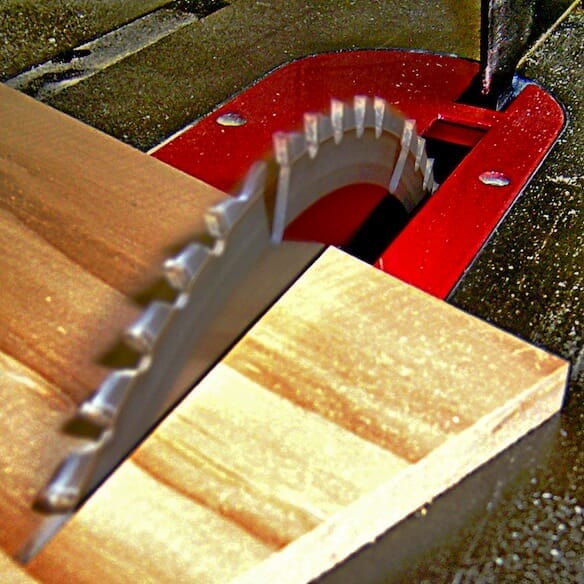
Image credit: Wikipedia.
So You Want to Buy a Table Saw – Maybe
By Ivan Jayson
Table saws are a useful tool for woodworking, whether at home or in the shop. Small wonder that they’ve been around since the American Revolution. Sturdier, safer, more versatile, and more efficient than just about any other cutting device, they can take on most wood-cutting jobs. Prices vary, though, depending on the size and power of the saw. Here’s a quick guide to what’s on the market, and what could your personal best saw for the price. We start with the least expensive and work our way up.
The Different Types of Table Saws
Portable Table Saws are the lightest weight machines on the market, and the lowest priced. They tend to sit on some sort of folding stand (with or without wheels, depending on the model, and run on conventional 110 volt wall current. If the model you’re looking at doesn’t come with one already, the stand can be purchases separately. With a usual blade diameter of 10”, and a weight that ranges between 40 and 400 pounds, the portable saw takes up little space in your garage or basement. Engines tend to run from three to 15 amps. In the interest of keeping weight down, parts tend to be steel, aluminum, and plastic. As a result, there could be more vibration than with their bigger cousins.
Contractor’s Table Saws are the next level up. They’re heavier than portable table saws, running at upwards of 200 to 300 pounds. While one person can set up a portable table saw, it takes two for a contractor’s table saw. Designed for more frequent use than their lighter cousins, contractor’s table saws have more durable parts, along with a 10” cutting blade. They have broader bases and bigger table tops, which allows them to handle more complex jobs. Power runs from 1.5 horsepower up to 3 horsepower, while blades are 10”. Motors are either direct-drive (no drive belt needed) or belt-driven. This is a good intermediate choice.
Stationary Table Saws are the heftiest choice out there, and the priciest. They’re often called cabinet table saws, because the engine is enclosed inside a cabinet that’s designed to quiet the powerful motor and protect it from flying dust. These saws come with two sizes of blades, 10” and 12”, and may even be able to handle other specialized blades. Power ranges from 3 to 5 horsepower or even more for the most industrial of models. Unlike the contractor’s or portable table saws, stationary table saws are, well, stationary. They’re just too heavy to move into the back of a pickup truck. Work has to come to them. They also may require 220 volts. That said, their cutting power and versatility is unsurpassed.
Conclusion
No matter which type saw is right, buyers should take in account whether a particular model has one or more of the following safety features. A splitter or riving knife makes sure that cut wood gets separated. This can help prevent dangerous kickback, as can a number of aftermarket add-ons. Bevel capacity will allow you to tilt the blade left or right for angled cuts. Finally, table saws get dusty. This isn’t as big an issue with a cabinet table saw. For the others, a dust port can direct sawdust to a dust collection system.



